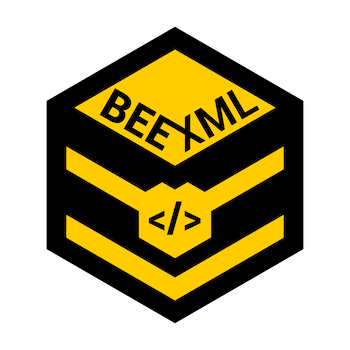beeXML.org is focused on supporting your use of the beeXML standard by:
- Documenting the standard
- Documenting our implementation experiences
- Providing a beeXML Implementation Guide
- Collaboration with other standards bodies
- Providing assistance in properly understanding and interpreting the BeeXML standard
- Supporting all projects in their efforts to exchange of data about bees and beekeepers in a standardized format
- BeeXML.org is not an electronic market place or a software!
The beeXML standard enables the following benefits:
- Accurate data
- Reduced costs for exchanging data between projects and institutions
- Consistent information throughout the beekeeping sector
- Interact between project partners in an uniform manner
- Simplify the process for dealing with multiple sources of data
- Reduced manual work, resulting in fewer entry errors
- Real-time exchange of information and greater electronic information availability
What is XML?
XML ‐ (Extensible Markup Language) is used to store and transport data.
Some design principles of XML:
- Simplicity: ease of usage, interoperability & understanding
- Modular design: do one thing well
- Extensible: Ability to easily modify the structure & content
- Self-descriptive: ease of understanding
- Machine readable
- Human readable
- Embedded descriptive tags
XML is designed for data availability, sharing, transport. It requires complementary technology to do anything else. i.e. Someone must write a piece of software to send, receive, store, or display it, for example:
- HTML: Format & presentation of the data
- Web Service: Transport of the data (e.g. SOAP)
- Database: Store & integrate with other data sources
Source: Data modeling for XML and Json
